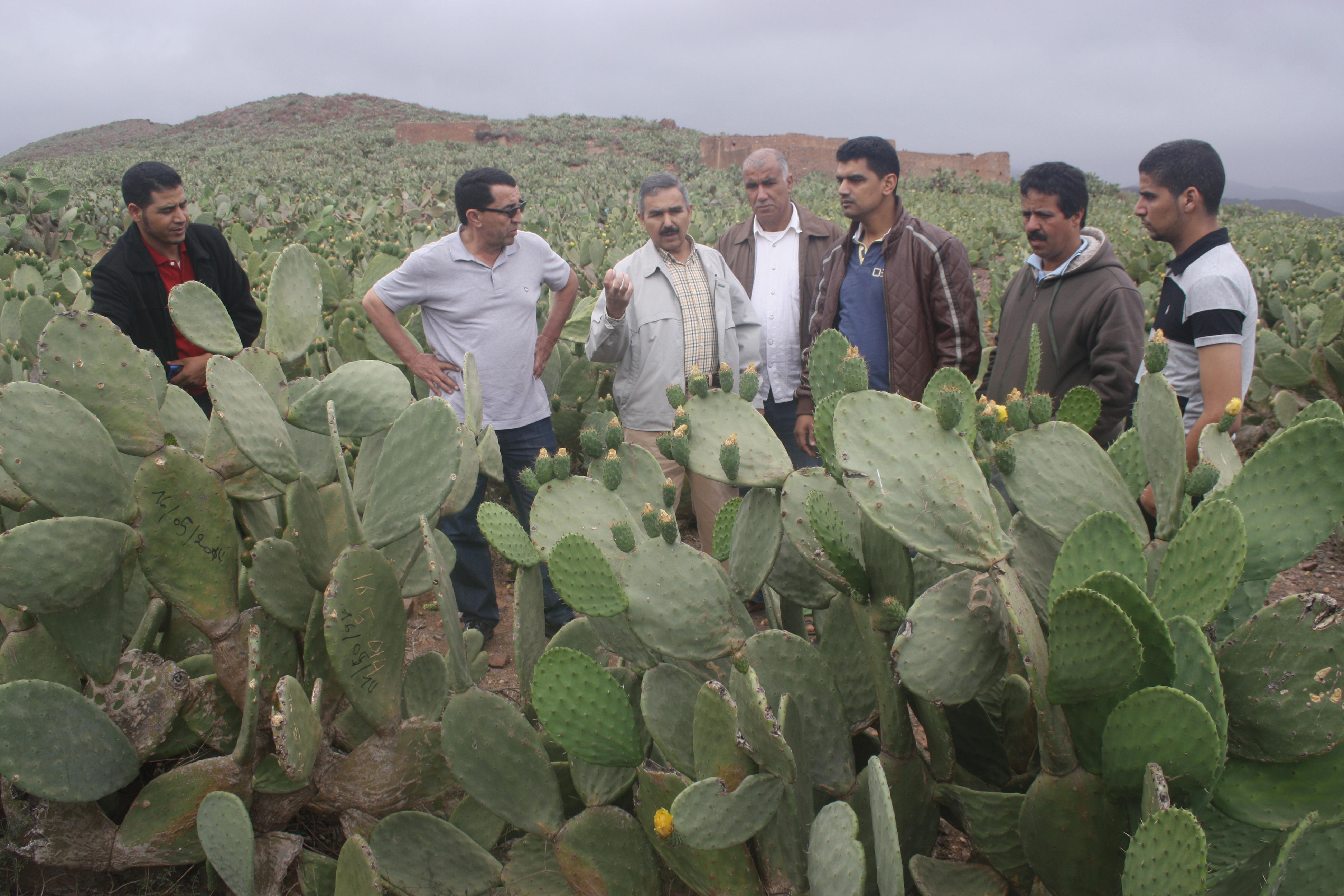Prickly Pear
Prickly pears – also called cactus fruit, barbary figs, and tunas – are the fruit of the Opuntia cactus plant. Native to Mexico, they can be commonly found in various arid and semi-arid areas of the world such as Southwestern Morocco, where they play an important role in the fight against soil erosion and desertification.
El hindia, as the prickly pear is known in Moroccan Arabic, is widely sold as a refreshing snack by street vendors mainly during the hot summer months, but for the Ait Baâmrane variety the production can last until December. Whilst previously eaten as fruit or used for animal feed, in recent years the cactus has gained increasing attention thanks to new health and cosmetic products being extracted from this ubiquitous plant. Prickly pear seed oil – made from grinding the black seeds of the fruit – is used in more than 40 cosmetic products and sells at a very high prices as a pure skin oil. It takes around a ton of fresh prickle pears to produce one litre of cactus seeds oil .
THE Ait Baâmrane PRICKLY PEAR VALUE CHAIN
The town of Sidi Ifni in the Ait Baâmrane region is known as Morocco’s cactus capital. It is blessed with the right climate for the more than 45,000 hectares of land that is being used to produce vast numbers of prickly pears (approximately 30% of the national production of cactus with a yield of 8.3 tons per hectare).
The cultivation of prickly pear is a major source of local income, representing 57% of total agricultural business in the region. But whilst the area dedicated to the cultivation of cactus has doubled since the late 1990s, this has unfortunately not been met by the same momentum in the organization of producers or improved marketing and diversification of products. It is estimated that sales barely exceed 60% of production and the level of exports remains very low. This represents a huge loss to the value chain in terms of job opportunities.
In 2011, a Protected Geographical Indication (PGI) was recognized with the objective of ensuring the legal protection of two ecotypes – Moussa and Aissa. The PGI also aims to organize and promote the cooperative spirit between the actors in the value chain, to improve the local economy and incomes of those involved in the cultivation of cactus, to strengthen the plant’s environmental impact (on soil erosion and biodiversity), as well as promoting environmentally friendly farming practices.
A packaging unit with a capacity of 10,000 tons, was established in Sidi Ifni by the Ministry of Agriculture and the Agency for Agricultural Development in 2011, under the Green Morocco Plan. The structuring of the value chain is relatively new and processing of products (cosmetic oil, jam, dried fruit, etc.) is performed at the cooperatives, in small quantities.
To improve the performance of the value chain several challenges need to be addressed such as the organization of the producers, improving production and harvesting techniques (to reduce losses), establishment of a quality approach, as well as marketing and governance of the value chain (due to low cooperation between producers and the predominant role of intermediaries).
PAMPAT’S SUPPORT TO PRICKLY PEAR VALUE CHAIN DEVELOPMENT
 Public and private stakeholders in the region will be supported to implement a joint action plan to improve the competitiveness of the entire value chain – from harvesting and packaging to processing.
Public and private stakeholders in the region will be supported to implement a joint action plan to improve the competitiveness of the entire value chain – from harvesting and packaging to processing.
Farmers in the region will be supported in networking (through associations and cooperatives ) and in improving their technical capacities by introducing new farming and harvesting techniques, by training farmers and collectors in more sustainable and efficient collection techniques. A strong focus will also be placed on developing business plans and collective projects for trade and ultimately facilitate the market access for products issued from the value chain.
Farmers and consumers will also be made aware of the importance of using the Geographical indication through promotional activities organized to facilitate market access and trade (both national and international) of the Ait Baâmrane prickly pear.